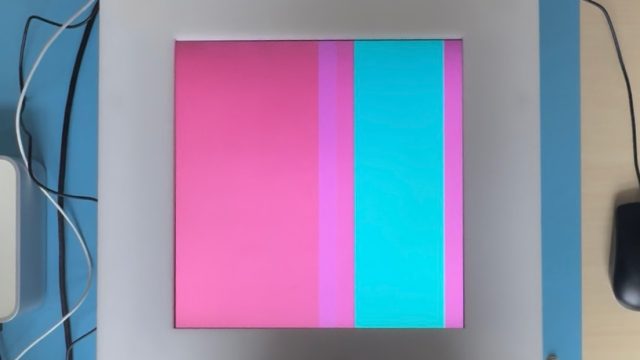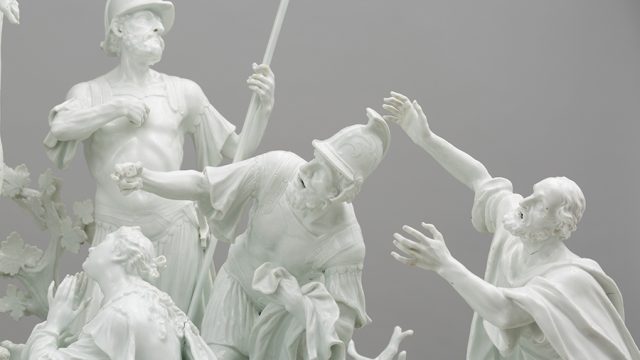An Object Lesson with Malcolm Baker

As we walked from the beautiful red ante chamber to the white drawing room, the sun came through the clouds and gently lit the eight striking faces of Alexander Pope.

It was in this rather magical setting that Curator, Professor, Art Historian and V&A Honorary Senior Research Fellow Malcolm Baker led myself and colleagues from the V&A Research Department through his exhibition, Fame and Friendship: Pope, Roubiliac and the Portrait Bust at Waddesdon Manor.
The exhibition has been co-organized by the Yale Center for British Art and Waddesdon Manor (The Rothschild Collection) on display until October 26, 2014. The central focus of this exhibition are the eight busts of the 18th century English poet Alexander Pope by Louis François Roubiliac that have been brought together for this exhibition. They create a striking view giving the illusion of identical duplication. In fact they tell a very interesting tale, through their duplication and subtle differences, of 18th century portrait bust design, production and the very careful construction of Alexander Pope’s public image masterminded by Alexander Pope himself.

With all these busts together in one space you start to play a game of spot the difference identifying how each relates or separates itself from its surrounding counterparts and how together they create a uniform experience of an image that is consequently stronger and stays more fixed in your mind. This seems to be what Alexander Pope himself was aiming at, the creation of a very distinct memorable image of himself not one that was overly flattering but one that had strength and force both visually and in the viewers mind.
This kind of attention created by these objects being altogether in one space also focuses your scrutiny on the materiality of each individual bust. How the different materials create different surface qualities, the smooth surface of the marble compared with the rougher texture of the terracotta which prompts questions about, for example, how the artist may relate to the material in different ways depending on whether he is using a tool or his hands and so on.


Alongside these central busts a number of adaptations and copies of Roubliliac’s iconic objects are also displayed. These additional busts very clearly show the way that other artists used and adapted the pose created by Roubiliac which itself was inspired by Classical busts. The inclusion of these busts is also used to illustrate the careful control Alexander Pope had over the creation of his own public image as many were produced in conversation with him.
As such this display of busts makes clear the relationships between Roubliliac’s eight busts, many of which represent different stages in the process of production, as well pointing to and prompting questions about the process of replicating, copying and re-use that was, it becomes clear, an important part of eighteenth century portrait bust sculptural production.


By filming Malcolm in this space and capturing his explanation of the process of curation and his wealth of knowledge about both Alexander Pope and Roubiliac and the context in which these busts were produced, we hope to create both a visual and audio record of the curatorial process. Particularly the point that by placing these busts together in a room and letting the objects reflect each other and allowing the audience to experience these objects together you are able to more effectively explain, understand and importantly discover object relationships, context, design and production.
We will be making this footage available to view in the coming weeks.
Exhibition Information: Curated by Malcolm Baker, Distinguished Professor of the History of Art at the University of California, Riverside, and Honorary Senior Research Fellow at the Victoria and Albert Museum, London. The organizing curator at the Yale Center for British Art was Martina Droth, Associate Director of Research and Education, and Curator of Sculpture; and at Waddesdon Manor, Juliet Carey, Curator of Paintings and Sculpture.



For a full investigation into the busts of Alexander Pope by and after Roubiliac see
http://bathartandarchitecture.blogspot.co.uk/
Many thanks for this fantastic link.